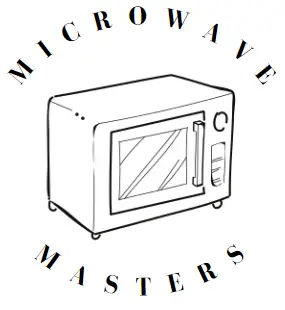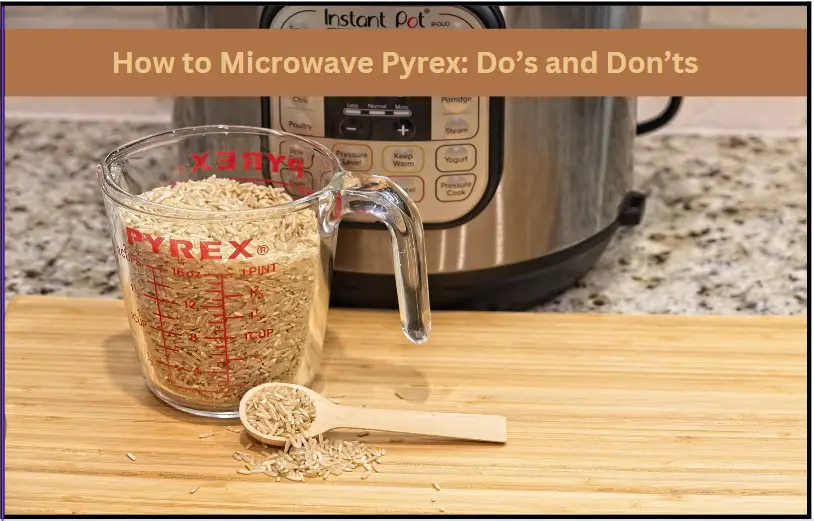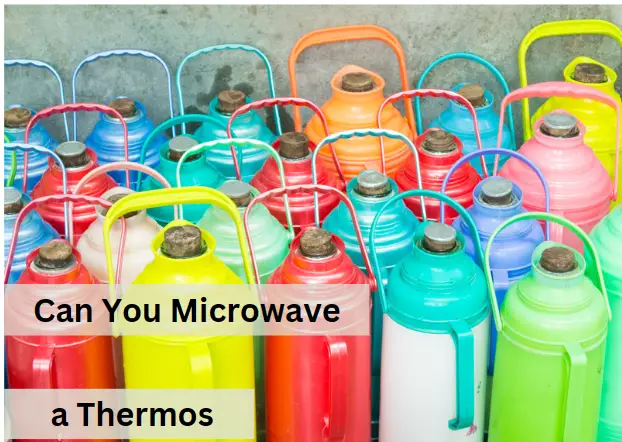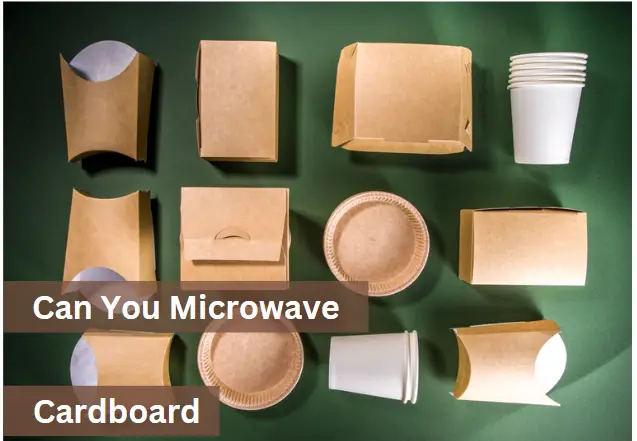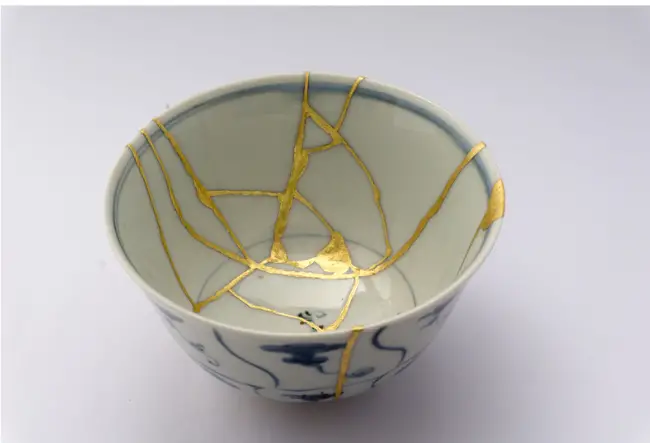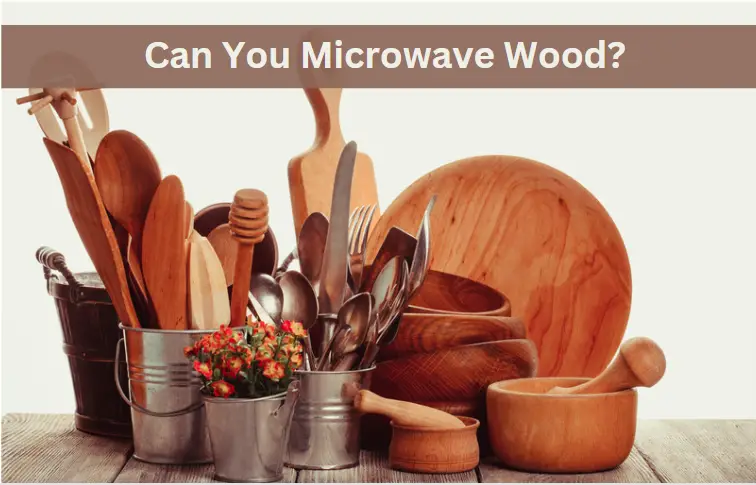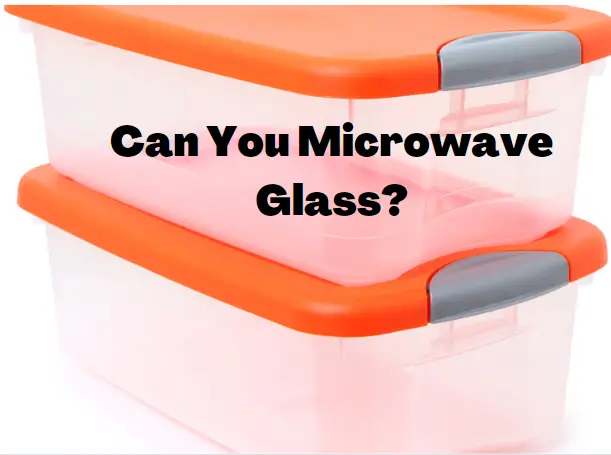How to Microwave Pyrex: Do’s and Don’ts
Microwaving Pyrex is a convenient and quick way to reheat food. However, it is important to know the do’s and don’ts of using Pyrex in the microwave to avoid accidents and ensure the longevity of your cookware. As someone who has used Pyrex in the microwave many times, I have learned a few tips and tricks that I would like to share with you.
Firstly, it is important to note that not all Pyrex is microwave-safe. Older Pyrex containers may contain materials that are not safe for use in the microwave, so it is important to check the label or manufacturer’s instructions before microwaving.
Additionally, Pyrex should not be subjected to sudden temperature changes, such as placing a hot dish in the refrigerator or freezer, or placing a cold dish in the microwave. This can cause the glass to shatter and create a dangerous situation.
Understanding Pyrex
As someone who frequently uses Pyrex in the microwave, it’s important to understand what Pyrex is and how it works. Pyrex is a brand of glassware that has been around for over 100 years. It was originally made by Corning Glass Works, but is now owned by a French company called Arc International. Pyrex is known for its high-quality tempered glass, which is made by heating the glass to a high temperature and then cooling it quickly. This process creates a glass that is much stronger than regular soda-lime glass.
Pyrex glass is made from borosilicate glass, which is a type of glass that contains boron trioxide. This makes the glass more resistant to thermal shock, which means that it can withstand sudden changes in temperature without breaking. This is why Pyrex is often used in the kitchen, as it can go from the freezer to the oven without any issues.
It’s important to note that not all Pyrex products are made from borosilicate glass. In recent years, some Pyrex products have been made from tempered soda lime glass instead. While this glass is still high-quality, it’s not as resistant to thermal shock as borosilicate glass. If you’re unsure whether your Pyrex product is made from borosilicate glass, check the label or contact the manufacturer.
Overall, Pyrex is a great choice for microwave use because it can withstand high temperatures and sudden changes in temperature. Just be sure to follow the manufacturer’s instructions and avoid sudden temperature changes, such as pouring cold liquids into a hot Pyrex dish. With proper use and care, Pyrex can last for many years and be a valuable addition to your kitchen.
Microwave Safety Basics
When it comes to using Pyrex in the microwave, safety should always come first. Here are some basic tips to ensure that you are using your microwave safely:
Check for the Microwave-Safe Label
Before using any dish in the microwave, always check for the microwave-safe label. This label indicates that the dish is safe to use in the microwave and has been tested for this purpose. If your Pyrex dish does not have a microwave-safe label, it is best to avoid using it in the microwave.
Avoid Sudden Temperature Changes
Pyrex should not be subjected to sudden temperature changes. For example, you should never place Pyrex dishes from a fridge or freezer directly inside a microwave. This sudden change in temperature can cause the glass to shatter, which can be dangerous.
Use Short Heating Intervals
When heating food in Pyrex dishes, it is important to use short heating intervals. This will help to prevent overheating, which can cause the glass to weaken or break. It is also a good idea to stir the food in between heating intervals to ensure that it is heated evenly.
Use a Microwave Cover
Using a microwave cover can help to prevent splatters and spills in the microwave. It can also help to keep your Pyrex dish clean and free from bacteria. When using a microwave cover, make sure that it is microwave-safe and fits securely over your Pyrex dish.
Check the Temperature
Before eating any food that has been heated in the microwave, make sure to check the temperature. This will help to ensure that the food is heated to a safe temperature and is free from harmful bacteria.
By following these basic microwave safety tips, you can ensure that you are using your Pyrex dishes safely and effectively in the microwave.
The Science Behind Microwaving Pyrex
As someone who loves to cook and heat up leftovers, I’ve always been curious about the science behind microwaving Pyrex. Pyrex is a type of glassware that is popularly used in kitchens around the world due to its durability, heat resistance, and the fact that it does not absorb odors or flavors from food. But what makes Pyrex so safe to use in the microwave?
Thermal Shock Resistance
One of the key factors is Pyrex’s thermal shock resistance. Thermal shock occurs when there is a sudden temperature change in a material, which can cause it to crack or break. Pyrex is made of either borosilicate or soda lime glass, both of which have a low coefficient of thermal expansion. This means that they can withstand sudden temperature changes without breaking. So, when you microwave Pyrex, it can handle the rapid temperature changes without cracking or breaking.
Heats Food Evenly
Another important factor is Pyrex’s ability to evenly heat food. Pyrex is a good conductor of heat, which means that it can distribute heat evenly throughout the food. This is important when microwaving food, as you want it to be heated evenly to avoid hot spots or cold spots.
Can Withstand High Temperatures
Pyrex is also able to withstand high temperatures. According to the Food Network, Pyrex is heat resistant up to 425 degrees Fahrenheit, making it a good option for microwaving. This means that even if you accidentally leave your Pyrex container in the microwave for too long, it should still be able to handle the heat.
Overall, the science behind microwaving Pyrex comes down to its thermal shock resistance, ability to evenly heat food, and ability to withstand high temperatures. By using Pyrex in the microwave, you can safely and efficiently heat up your food without worrying about it breaking or cracking due to sudden temperature changes.
Potential Risks of Microwaving Pyrex
Microwaving Pyrex glassware is generally safe, but there are some potential risks to keep in mind. As with any kitchen tool, it’s important to follow the manufacturer’s instructions and take precautions to avoid accidents.
Shattering
One of the main risks associated with microwaving Pyrex is shattering. Pyrex glass is designed to be more resistant to thermal shock than other types of glass, but it can still break if exposed to sudden temperature changes. This can happen if you take a Pyrex dish out of the microwave and place it on a cold surface, or if you put a hot Pyrex dish in the fridge or freezer.
Overheating
Another risk is overheating. Pyrex is designed to withstand high temperatures, but if you leave it in the microwave for too long or use too high of a power setting, it can become overheated and potentially crack or even explode.
Using damaged Pyrex
It’s also important to avoid using damaged Pyrex in the microwave. If your Pyrex dish is cracked, chipped, or otherwise damaged, it may not be able to withstand the heat and pressure of the microwave. This can lead to breakage or shattering.
Tips for Using Pyrex in the Microwave
To minimize the risks associated with microwaving Pyrex, there are a few do’s and don’ts to keep in mind:
- Do follow the manufacturer’s instructions for microwaving Pyrex.
- Do use caution when handling hot Pyrex dishes, and avoid placing them on cold surfaces.
- Do avoid using damaged Pyrex in the microwave.
- Don’t leave Pyrex in the microwave for too long or use too high of a power setting.
- Don’t put hot Pyrex in the fridge or freezer.
By following these guidelines, you can safely and effectively use Pyrex glassware in the microwave.
Precautions When Microwaving Pyrex
When microwaving Pyrex, it is important to take some precautions to avoid any accidents or damage to the dish. Here are some guidelines to follow:
- Use oven mitts or a towel to handle hot Pyrex dishes. The glass can get very hot and cause burns if not handled properly.
- Avoid using Pyrex that has scratches or chips. These imperfections can weaken the glass and make it more prone to breakage.
- Do not place cold Pyrex dishes directly into the microwave. The sudden change in temperature can cause thermal shock and shatter the glass. Instead, let the dish come to room temperature or warm it up gradually by placing it in the oven at a low temperature.
- When microwaving Pyrex, use short heating intervals and stir the food in between. This helps distribute the heat evenly and prevent overheating, which can cause the glass to weaken or break.
- Avoid placing hot Pyrex dishes on cold surfaces or rinsing them with cold water. This can also cause thermal shock and lead to breakage. Instead, let the dish cool down to room temperature or place it on a soft, dry surface.
- Keep Pyrex dishes away from moisture, as this can cause them to become slippery and difficult to handle.
By following these simple precautions, you can safely microwave Pyrex and enjoy your favorite dishes without any worries.
Microwaving Specific Pyrex Items
When it comes to microwaving Pyrex, there are certain do’s and don’ts to keep in mind. In this section, I’ll cover specific Pyrex items and how to safely microwave them.
Pyrex Bowls
Pyrex bowls are a popular choice for microwaving leftovers or cooking meals in the microwave. However, it’s important to note that not all Pyrex bowls are created equal. Some Pyrex bowls may not be safe for microwave use, so it’s important to check the label or packaging for microwave-safe indications.
When microwaving Pyrex bowls, it’s important to avoid sudden temperature changes. This means you should avoid transferring the Pyrex bowl from the freezer or fridge directly to the microwave. Instead, allow the Pyrex bowl to come to room temperature before microwaving.
Additionally, it’s important to avoid microwaving Pyrex bowls that are cracked or chipped. These imperfections can weaken the structure of the Pyrex bowl and cause it to break or shatter in the microwave.
Pyrex Lids
Pyrex lids are typically made from either glass or plastic. When microwaving Pyrex lids, it’s important to check the label or packaging for microwave-safe indications. Glass lids are typically safe for microwave use, but plastic lids may not be.
When microwaving Pyrex with a glass lid, it’s important to avoid sudden temperature changes. Allow the Pyrex to come to room temperature before microwaving, and avoid microwaving Pyrex with a cracked or chipped glass lid.
If using a plastic Pyrex lid, be sure to check the label or packaging for microwave-safe indications. Some plastic lids may not be safe for microwave use, as they can melt or warp in the microwave. If using a plastic Pyrex lid, be sure to use a microwave-safe cover instead.
Overall, microwaving Pyrex can be a convenient and safe way to heat up leftovers or cook meals. Just be sure to follow these do’s and don’t’s when microwaving specific Pyrex items.
Other Uses of Pyrex
Pyrex is not only a great heat-resistant glass for microwaving, but it is also versatile for other uses in the kitchen. Here are some other ways I use Pyrex in my cooking and meal prep routine:
- Oven-safe: Pyrex is not only safe to use in the microwave but also in the oven. I love using Pyrex baking dishes for casseroles, lasagnas, and roasted vegetables. They are easy to clean and can go straight from the oven to the table for serving.
- Freezer-friendly: Pyrex is freezer-friendly, which makes it perfect for meal prep. I like to make large batches of soups, stews, and sauces and store them in Pyrex containers in the freezer. They are easy to defrost and reheat when I need a quick and easy meal.
- Grilling and frying: Pyrex can be used for grilling and frying. I like to marinate meats in Pyrex dishes and then transfer them to the grill or stovetop for cooking. Pyrex is also great for frying as it can withstand high temperatures.
- Thawing meat: Pyrex is also useful for thawing meat. I like to place frozen meat in a Pyrex dish and let it thaw in the fridge overnight. Pyrex is also safe to use for thawing meat in the microwave, but it is important to follow the manufacturer’s instructions and never microwave a frozen Pyrex container.
Overall, Pyrex is a versatile and useful tool in the kitchen. From microwaving to baking, freezing, grilling, frying, and thawing, Pyrex can handle it all. It is easy to clean, durable, and can last for years with proper care.
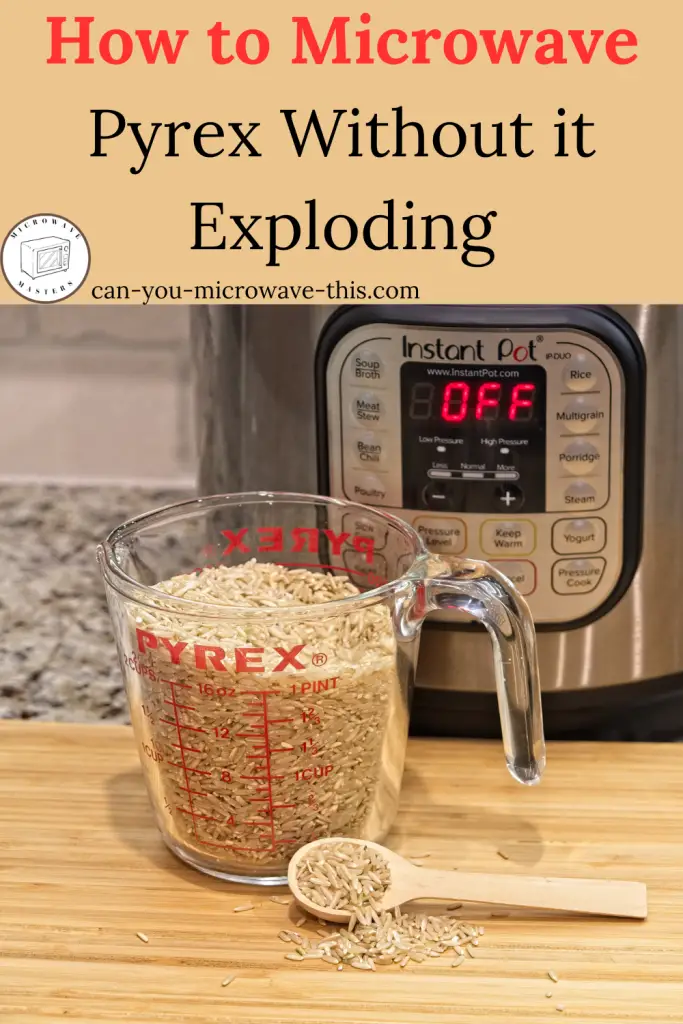
Health and Environmental Aspects of Pyrex
When it comes to using Pyrex in the microwave, it’s important to consider the health and environmental aspects of the material. Here are some key points to keep in mind:
- BPA: Pyrex is BPA-free, so you don’t have to worry about harmful chemicals leaching into your food when you use it in the microwave. This is great news for your health, as BPA has been linked to a variety of negative health effects.
- Harmful Chemicals: Pyrex is made from tempered glass, which means it’s free from harmful chemicals like lead and cadmium. This makes it a safe and healthy choice for cooking and reheating food in the microwave.
- Health: Using Pyrex in the microwave is a healthy option, as it doesn’t release harmful chemicals or toxins into your food. Plus, it’s easy to clean and doesn’t absorb odors or flavors like plastic containers can.
- Environment: Pyrex is an eco-friendly choice, as it’s made from glass, which is recyclable and doesn’t contribute to plastic waste in landfills. Plus, Pyrex dishes are durable and long-lasting, so you don’t have to worry about replacing them frequently.
Overall, Pyrex is a safe, healthy, and environmentally-friendly option for microwaving food. Just be sure to follow the manufacturer’s instructions for safe use and care, and you’ll be able to enjoy your Pyrex dishes for years to come.
Wrapping Up
In conclusion, Pyrex is a great option for microwave cooking as long as it is used correctly. It is important to follow the manufacturer’s guidelines and avoid sudden temperature changes. Here are some do’s and don’ts to keep in mind when using Pyrex in the microwave:
Do’s
- Use Pyrex that is labeled microwave safe.
- Clean and dry the Pyrex before using it in the microwave.
- Use a microwave-safe lid or cover to prevent splatters.
- Use oven mitts or a towel to handle hot Pyrex.
- Use a microwave-safe plate or tray to catch any spills.
Don’ts
- Do not subject Pyrex to sudden temperature changes, such as placing it in the microwave straight from the freezer or fridge.
- Do not use Pyrex with any cracks or chips.
- Do not use metal utensils on Pyrex.
- Do not use Pyrex to cook foods with high sugar or fat content for extended periods.
By following these simple guidelines, you can safely and effectively use Pyrex in the microwave. Enjoy your favorite meals and snacks with ease and convenience!
Frequently Asked Questions
Can I put Pyrex in the microwave with the lid on?
It is not recommended to put Pyrex in the microwave with the lid on. The pressure that builds up inside the container can cause it to explode, and the lid may also melt or warp due to the heat. To avoid any accidents, remove the lid before microwaving your Pyrex container.
Is Pyrex microwave safe?
Yes, Pyrex is microwave safe. However, it is important to follow the manufacturer’s instructions and guidelines to ensure safe and effective use. Pyrex should not be subjected to sudden temperature changes, and it is best to microwave food in individual-sized Pyrex containers to ensure even heating.
What are the Pyrex symbols for microwave use?
The Pyrex symbols for microwave use include a microwave icon with wavy lines and the words “microwave safe.” These symbols indicate that the Pyrex container is safe to use in the microwave as long as the manufacturer’s instructions are followed.
Can Pyrex bowls with lids go in the microwave?
Pyrex bowls with lids can go in the microwave, but it is important to remove the lid before microwaving to prevent any accidents. The lid can warp or melt due to the heat, and the pressure that builds up inside the container can cause it to explode.
Is it safe to microwave glass bowls?
Yes, it is generally safe to microwave glass bowls as long as they are microwave safe and the manufacturer’s instructions are followed. However, glass can become very hot in the microwave, so it is important to use caution when handling it.
Why did my Pyrex bowl break in the microwave?
Pyrex can break in the microwave due to sudden temperature changes or if it is scratched or damaged. To prevent this, it is important to follow the manufacturer’s instructions and avoid exposing Pyrex to extreme temperature changes. Additionally, it is best to use Pyrex containers that are free from scratches or damage.
Related Posts:
